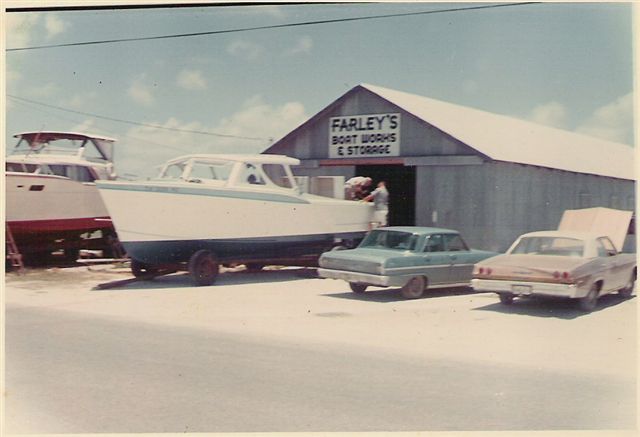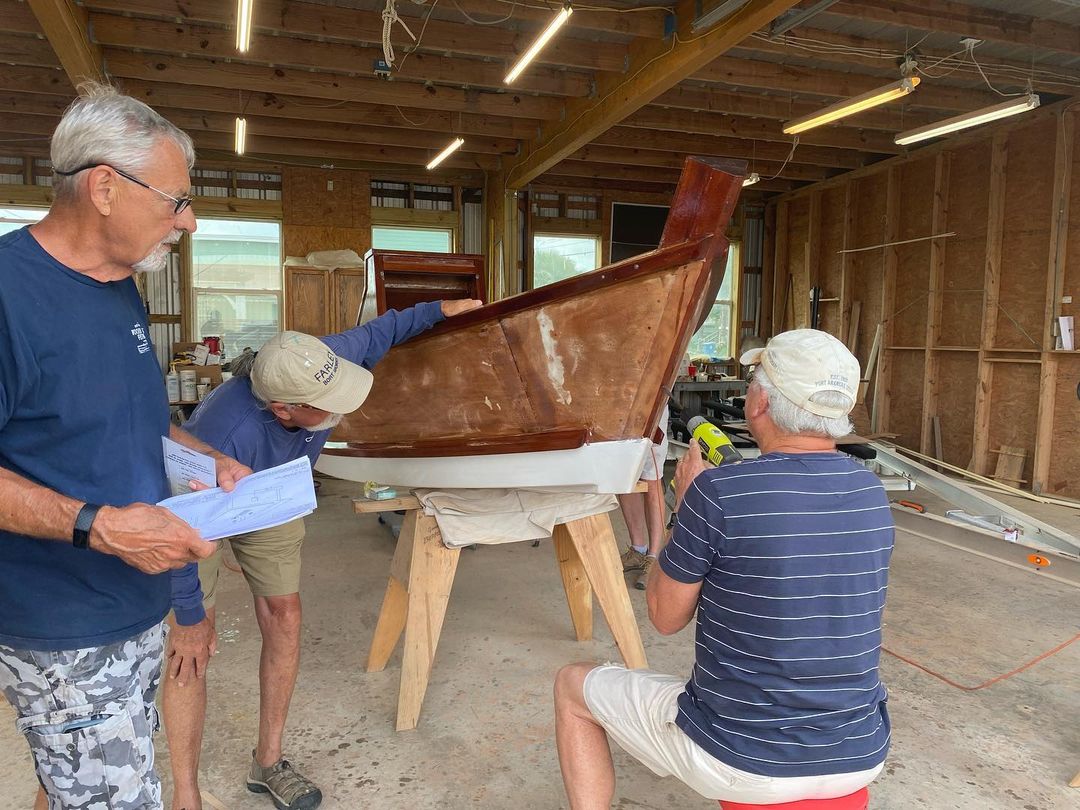Farley Boat Works is a family-owned business that specializes in the production and maintenance of boats, ranging from small dinghies to luxury yachts, as well as restoration services. Founded in the early 19th century, Farley Boat Works has been a trusted provider of marine products for over two hundred years.
History of the Farley Boat Works
In 1910, Barney and Fred Farley, brothers, arrived on the Texas coast. Barney eventually settled in Port Aransas, while Fred lived in Rockport to the north. Barney aspired to be a tarpon guide. While he was learning those skills, he determined that a man who could provide the guides with reliable and affordable power fishing boats could do well in Port Aransas. He shared that thought with Fred, who just happened to be a master woodworker. With Fred’s craftsmanship and Barney’s vision, they pooled their resources to build the boats.
The Farley and Son Boat Works was founded in Port Aransas in 1914 by Fred Farley, who relocated his wife, Mabel, and his sons there after recognizing a promising business opportunity. Jim was the son, but over time his brothers Don and Fred Jr. also joined the family business. The first Farley boat built specifically for tarpon fishing off the coast of Port Aransas was launched in 1915 after the boat builders got to work.
In order to accommodate the demands of the local fishing guides, Fred’s first fishing boat design was an 18-footer. To navigate choppy waves, it was built with low sides and a tall bow. They were not well suited for the Gulf Coast chop at the time because the only boats available to local anglers and guides had flat bottoms and high sides. Contrarily, the Farley boat was built to fish in the area’s waters and was capable of navigating rough seas. The brothers soon recognized the Farley Boat’s potential to become an essential tool for commercial fishermen and anglers alike, and as word of their innovative craftsmanship spread, demand grew.
Six decades of excellence in boat building and business management began with the arrival of Charles Fredrick “Fred” Farley. The Farley boat building saga is undoubtedly a significant section of Port Aransas, Texas,’ maritime history. The town’s rapidly expanding sport fishing industry saw Barney Farley start out as a fishing guide before he went on to become a successful businessman. He earned the reputation of being a knowledgeable and honest person, and his commitment to quality workmanship was evident in all the boats he built.
The Farley family became a leading force in boat building on the Texas Coast, and their boats could be seen everywhere, from near shore fisheries to deep sea fishing. As sport fishing on the Texas Coast increased, the demand for more boats grew, and this provided further opportunities for the Farley family to expand their business. Soon, fishermen from all over Texas and the US began taking trips to Port Aransas to purchase boats from Farley and Son Boat Works.
1st Location – Waterfront
The original Farley location was near a body of water. Although no photographs of the company’s waterfront site exist, it is believed that the first Farley boat was launched there in 1915. The waterfront location was perfect for fishermen and boatbuilders alike, providing access to both the shallow estuaries of Port Aransas and the deep waters of the Gulf of Mexico.
2nd Location – East of the Tarpon Inn
The Farleys’ decision to relocate their business inland was undoubtedly inspired by the 1919 hurricane, which destroyed the Port Aransas waterfront. The second Farley Boat Works building featured shellcrete siding, a type of coastal construction that uses cement made from burned oyster shells and is located east of the Tarpon Inn. This new location was ideal for the Farley brothers; they now had access to larger bodies of water, while being away from the dangers of coastal storms.
3rd Location – White Avenue
White Avenue was the third location of the Farley Boat Works. The White Avenue location was more than twice the size of the Tarpon Inn and East Beach locations combined. The location offered a wealth of opportunity for the Farley brothers as it enabled them to expand the boat works’ operations. With the additional space, the Farley brothers were able to develop new designs, build larger vessels, and diversify their business into new markets. As a result, Farley Boat Works was able to increase its production and sales considerably.
Final Location – 716 West Avenue C
Even as fiberglass dominated the personal watercraft market, the Farleys persisted in producing wooden boats in keeping with their nautical philosophy. The Farleys made fun of the fact that if fiberglass trees were meant to be, nature would have produced them. Even as the Farleys faced increasing competition and financial troubles, they remained steadfast in their commitment to quality craftsmanship and traditional boatbuilding techniques.
The Farley Boat Works shut its doors in 1973 after 60 years of historically significant maritime operations. The building first housed Steve’s Boat Works, owned by Steve Janovsky, before becoming home to Camric Boats, run by Cameron and Rick Pratt, after Farley Boat Works shut down. The final location of Farley Boat Works, at 716 West Avenue C, has been renovated in 2011 and is now a working boat building shop and living museum.
Exhibitions
Two important remnants of Farley’s operations have been moved to the new museum for display—the Tina, a restored 1947 tarpon boat, and the Starfish, a larger boat from the 1960s now undergoing major restoration. Visitors will be able to view Starfish’s rebuilding from a platform inside the museum. The Tina, now housed in an unairconditioned shed, is similar to the Farley craft used by President Franklin D. Roosevelt in his famous 1937 fishing expedition to Port Aransas. Fred Farley’s brother, Barney, was one of the late president’s fishing guides.
Along with the Starfish and Tina, the new museum features a variety of donated artifacts, like early 1900s outboard motors and brass ship compasses, as well as historical photographs and photographs from the past. The new museum’s exterior design was inspired by images of the U.S. Lifesaving Station in Port Aransas, Texas, taken in the 1920s. The station was equipped with a trailer-mounted rescue boat that could be rolled to the shore and launched as needed.



